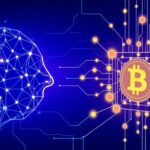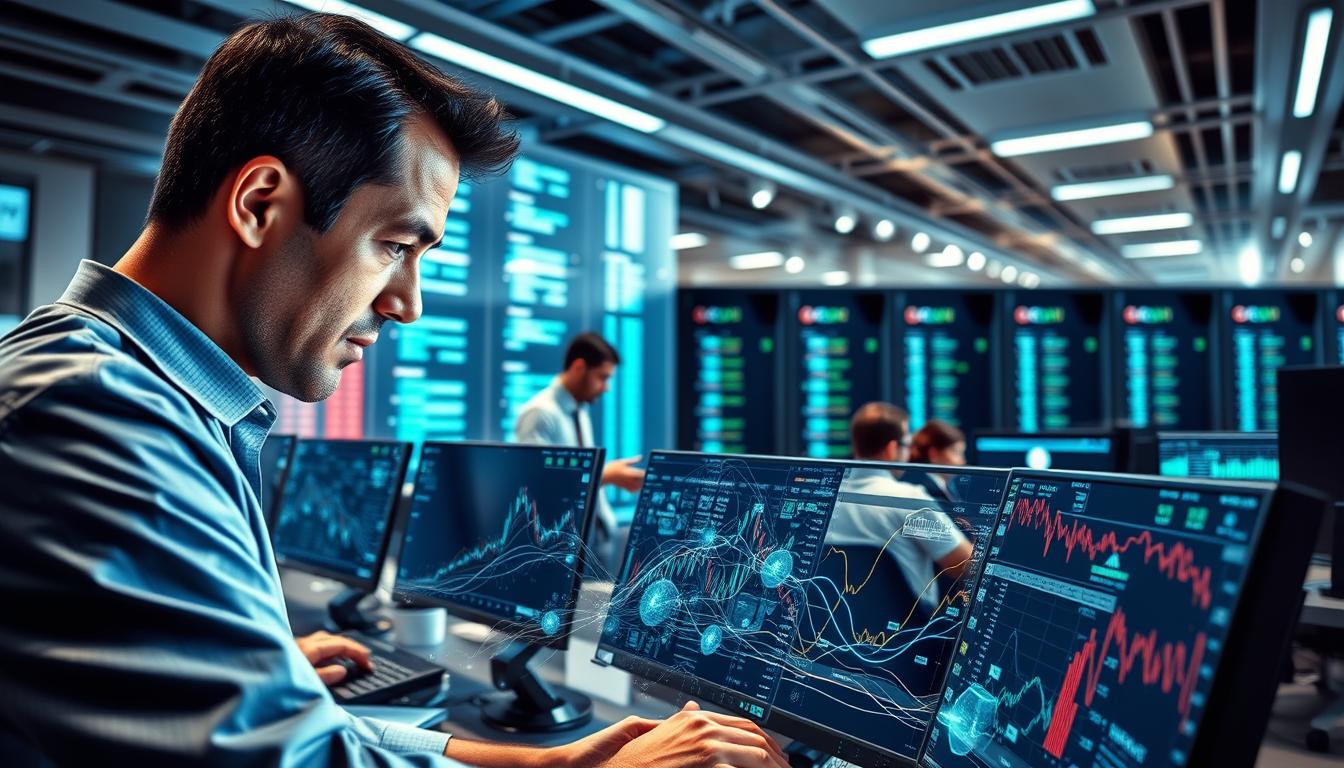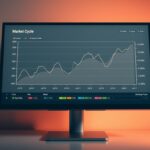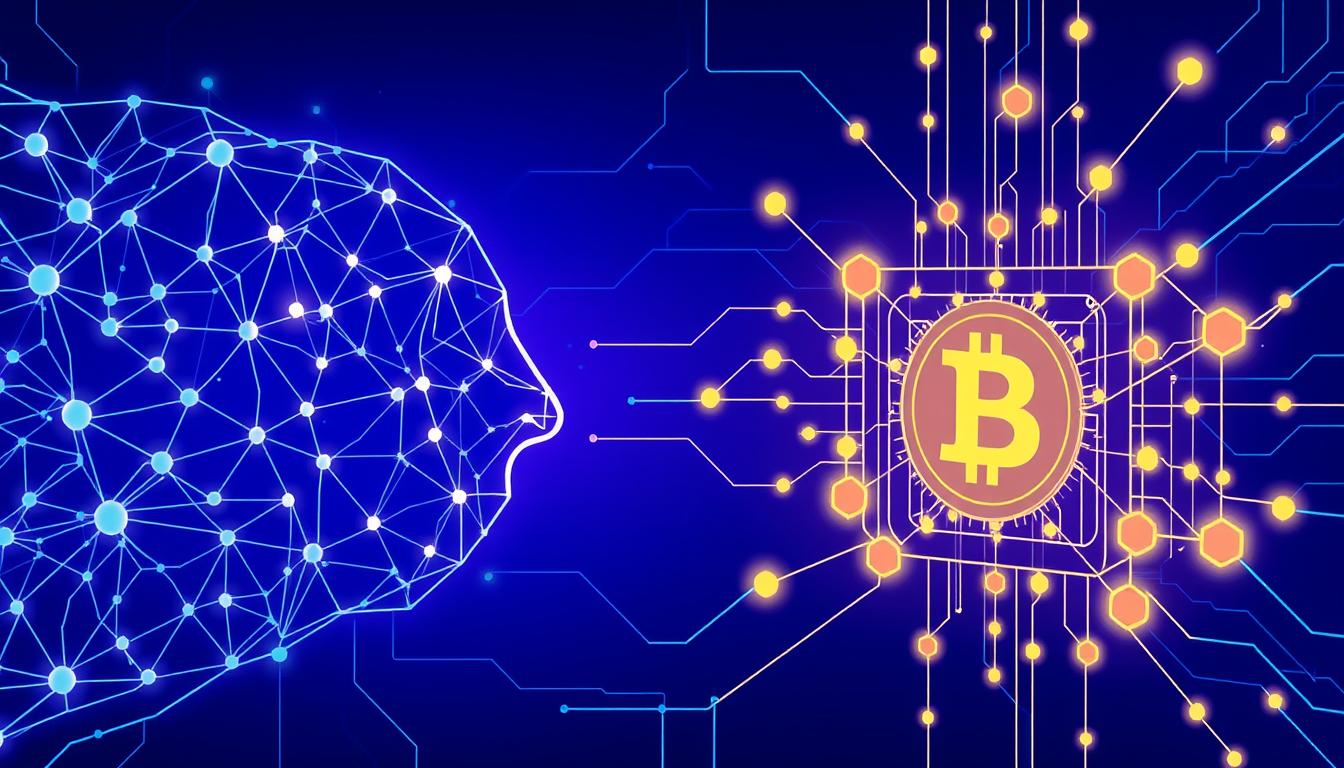The world of financial trading has changed a lot with artificial intelligence and big data. The global AI trading market was worth $18.2 billion in 2023. It’s expected to almost triple by 2033, showing how important this technology is in trading.
AI algorithms can handle huge amounts of data fast. This gives traders a big advantage. Now, modern trading uses automated decisions and predictive analytics a lot. This has changed how we do things in the market.
AI and big data are making the financial market more efficient and based on data. This article will look at AI trading systems, key tools, and future trends. These are changing the trading world a lot.
Understanding AI and Big Data in Financial Markets
The financial world has changed a lot with AI and big data. Before, markets relied on human skills and guesses for trading. Now, we use data-driven strategies thanks to new technologies.
AI and big data help traders look at lots of information. They find patterns and make smart choices. This has opened up new ways to understand data we didn’t use before.
The Evolution of Trading Technology
Trading technology has grown a lot. It went from manual to electronic and now to AI systems. Modern trading platforms use real-time data for faster and more accurate trades. This has made trading more efficient and based on data.
The table below shows the main changes in trading technology:
| Era | Trading Method | Key Features |
|---|---|---|
| Traditional | Manual Trading | Human intuition, limited data |
| Electronic | Electronic Trading Platforms | Faster execution, increased data access |
| Modern | AI-Powered Systems | Real-time data processing, AI-driven insights |
How Big Data Has Revolutionized Market Analysis
Big data has changed market analysis a lot. It lets traders work with huge amounts of data. This helps find market trends and patterns better. Big data analytics is key for traders to stay ahead.
Big data also lets traders use new data sources. Like social media and news, it gives a deeper look at the market.
What is AI Trading?
AI trading is a big change in finance. It uses algorithms to guess market moves. This new way of stock trading uses artificial intelligence and machine learning. It analyzes lots of data, finds patterns, and makes trades with little human help.
Definition and Core Concepts
AI trading means using artificial intelligence to analyze data and make investment choices. It uses machine learning to look at past data, find trends, and guess future market moves. The main idea is to make trading faster and more accurate by simulating human intelligence.
How AI Trading Works in Practice
AI trading systems look at lots of market data. This includes price changes, stock prices, and economic news. They keep learning from new data, getting better over time.
These systems can check millions of data points every second. This lets them spot chances and make trades fast, much faster than people can.
| Key Features | Description | Benefits |
|---|---|---|
| Advanced Algorithms | Use machine learning to analyze market data | Improved Accuracy |
| Real-Time Data Analysis | Process vast amounts of data in real-time | Enhanced Speed |
| Continuous Learning | Adapt to changing market conditions | Better Decision Making |
Types of AI Trading Systems
AI has brought many trading systems to the market. These systems use advanced algorithms and machine learning. They help analyze markets and make trades.
Quantitative Trading
Quantitative trading uses math to find profitable trades. It looks at historical data and uses data-driven insights.
Algorithmic Trading
Algorithmic trading uses set instructions to make trades. It follows strategies, reducing errors and boosting efficiency.
High-Frequency Trading
High-frequency trading works at incredible speeds. It makes thousands of trades per second, using advanced tech.
Automated Trading
Automated trading systems, or trading robots, make trades without humans. They follow set rules and can trade across many markets.
Arbitrage Trading
Arbitrage trading finds price differences in different markets. It buys low and sells high, making a profit from these differences.
Each AI trading system has its own purpose and strategy. From long-term investments to quick trades, knowing these systems is key for traders using AI.
- Quantitative trading systems analyze historical data to identify trading opportunities.
- Algorithmic trading executes trades based on pre-programmed instructions.
- High-frequency trading capitalizes on minimal price discrepancies.
- Automated trading systems operate without human intervention.
- Arbitrage trading exploits price differences across markets.
Essential AI Trading Tools and Platforms
AI has changed trading, bringing many tools and platforms to investors.
Portfolio Managers
AI portfolio managers automatically pick assets. They match investment goals and risk levels, adjusting portfolios for best performance.
Trading Robots
Trading robots make trades based on rules, working 24/7. They don’t get tired or emotional like humans do.
Strategy Builders
Strategy builders help traders create and test strategies. They use past data to improve strategies before using them in real markets.
Signal Generators
Signal generators find trading chances and alert traders. They provide insights based on market data.
Top AI Trading Companies
Leading AI trading companies like AlphaSense, Imperative Execution, and Numerai are leading the way. They use advanced tech to give big investors an edge in the market.
These AI tools are now open to regular investors. This makes advanced trading options available to more people, not just big players.
The Role of AI in Modern Trading Analysis
AI is key in today’s trading analysis. It helps sort through market data to find profitable patterns. AI is great at data mining and processing, finding insights in data that’s hard for humans to see.
Data Mining and Processing
AI can dig through huge datasets, like financial reports and news. This helps traders make smart choices with all the data they need.
Pattern Recognition
AI’s pattern recognition finds complex market patterns across different times and assets. It spots things that humans might miss, giving traders a better view of market movements.
Predictive Modeling
Predictive modeling uses machine learning techniques to guess future market movements. It looks at past data patterns and current market conditions. This helps traders plan ahead and adjust their strategies.
| AI Technique | Application in Trading | Benefit |
|---|---|---|
| Data Mining | Extracting insights from large datasets | Informed decision-making |
| Pattern Recognition | Identifying complex market patterns | Deeper understanding of market movements |
| Predictive Modeling | Forecasting future market movements | Anticipating market shifts |
How Big Data Fuels AI Trading Decisions
Big data is changing how trading decisions are made. AI uses huge datasets to analyze trends, predict the future, and make trades with high accuracy.
Processing Massive Datasets
Trading platforms now handle huge amounts of historical and real-time data. This includes price changes, trading volumes, and economic signs. AI finds patterns in this data that humans might miss. This helps AI systems make smart decisions based on detailed market analysis.
| Data Type | Description | Impact on Trading |
|---|---|---|
| Historical Data | Past market trends and prices | Informs predictive models |
| Real-Time Data | Current market conditions | Enables timely trading decisions |
| Economic Indicators | Macroeconomic data | Influences market analysis |
Real-Time Data Analysis
Real-time data analysis is key for AI trading. It lets AI systems keep an eye on market conditions and adjust strategies as needed. By looking at data as it happens, AI can spot new trends and make trades based on the latest info.
This is super useful in fast-changing markets. Being able to react quickly can really make a difference in trading results.
Practical Applications of AI in Trading
AI has many uses in trading, from analyzing feelings in the market to making trades automatically. These uses are changing how traders work, giving them better tools for making and executing decisions.
Sentiment Analysis
Sentiment analysis uses natural language processing to understand market feelings from online sources. This includes news, social media, and financial reports. It helps traders make better choices by showing them what the market might do next.
By looking at online financial talks, sentiment analysis goes beyond just stock market news. It also looks at social media, news sites, and forums.
Risk Modeling
Risk modeling uses AI to find and measure risks. It helps traders see how much they might lose or gain. This is key for managing risks and making smart trades.
AI looks at past data to predict future risks. This helps traders make choices based on solid information.
Backtesting and Benchmarking
Backtesting tests trading strategies with old data before using them in real trades. Benchmarking compares a strategy to a market standard. These steps help traders check how well their strategies work.
They test strategies against past data and compare them to market standards. This helps before putting real money into a strategy.
Automated Trade Execution
Automated trade execution systems make trades without a person. They follow rules set by the trader. This makes trading faster and more efficient than doing it by hand.
This system has changed how trades are made. It brings speed and efficiency that manual trading can’t match.
| Application | Description | Benefit |
|---|---|---|
| Sentiment Analysis | Analyzes market sentiment from online sources | Informed trading decisions |
| Risk Modeling | Assesses possible risks using past data | Optimized risk management |
| Backtesting and Benchmarking | Tests strategies against past data and market benchmarks | Strategy evaluation and improvement |
| Automated Trade Execution | Executes trades without human help | Speed and efficiency in trading |
Key Benefits of AI and Big Data in Trading
AI and Big Data have changed trading a lot. They make research and decision-making faster and more accurate. This lets investors focus more on their work and helping clients.
A survey found traders using AI got 10% more productive.
Enhanced Speed and Efficiency
AI trading systems work much faster than people. They can analyze data and make trades in milliseconds. This is a big advantage, letting traders take advantage of market chances quickly.
Improved Accuracy and Reduced Human Error
AI trading uses past data to make choices, reducing mistakes. It also removes emotional biases and tiredness from trading. This leads to more consistent results.
Advanced Pattern Recognition
AI is great at finding complex patterns and connections. This skill is key for creating smart trading plans.
Cost Reduction and Scalability
AI trading cuts costs by automating analysis and trades. It also handles more data and trades without costing more. This makes trading more scalable.
| Benefits | Description |
|---|---|
| Enhanced Speed and Efficiency | Faster data analysis and trade execution |
| Improved Accuracy | Less human error and emotional bias |
| Advanced Pattern Recognition | Finding complex market patterns |
| Cost Reduction and Scalability | Automated processes and handling more data |
Challenges and Limitations of AI Trading
AI trading has many benefits but also faces challenges. Knowing these challenges is key for using AI trading well.
Algorithmic Bias and Data Quality Issues
AI trading systems rely on the data they’re trained on. Algorithmic bias and data quality issues can cause bad trading choices. It’s key to make sure the training data is good and varied.
Regulatory and Ethical Concerns
As AI trading grows, regulatory and ethical concerns pop up. We need to talk about fairness, transparency, and market manipulation. This ensures AI trading stays legal and ethical.
Market Volatility and Flash Crashes
AI trading can make market volatility worse and lead to flash crashes. When many systems react the same way, prices can swing wildly. This causes big market changes.
Cybersecurity Vulnerabilities
Cybersecurity vulnerabilities are a big risk for trading systems. Hackers target these systems. Keeping financial data safe and preventing manipulation is vital.
- Algorithmic bias can lead to poor trading decisions.
- Regulatory concerns need to be addressed for fair trading practices.
- Market volatility can be exacerbated by AI trading systems.
- Cybersecurity is critical to protect financial data.
The Future of AI and Big Data in Trading
AI, Big Data, and new tech will change trading. The future will see big changes in trading, thanks to new tech and trends.
Emerging Technologies and Trends
New tech like deep learning and neural networks are changing AI trading. Future systems will use more data, like satellite images and IoT sensors. This will give them new insights.
- Advanced decision-making processes through sophisticated algorithms
- Increased use of alternative data sources for market analysis
Integration with Blockchain and Quantum Computing
AI and blockchain will make trading more open and safe. AI smart contracts can automate deals and checks. This makes trading clearer.
| Technology | Impact on Trading |
|---|---|
| Blockchain | Enhanced transparency and security in trade settlement |
| Quantum Computing | Ability to analyze complex patterns and solve optimization problems |
These techs will keep changing trading, making it better and easier.
Conclusion
In today’s fast-changing markets, AI and big data are key to success. AI in modern trading is now essential for staying ahead.
The mix of artificial intelligence and big data opens new chances for traders. They can now analyze markets better and make trades with more precision. But, it’s important to balance tech with human insight and strategy.
As AI technologies grow, traders must keep up with rules and ethics. The future of trading will see more AI use. Those who adapt will have big advantages in complex markets.














